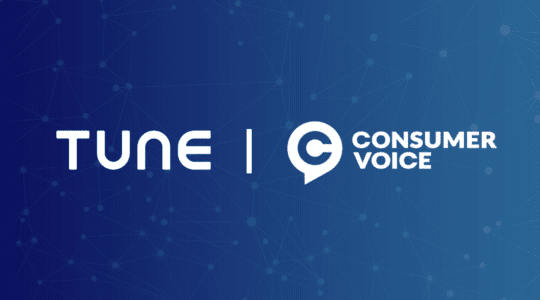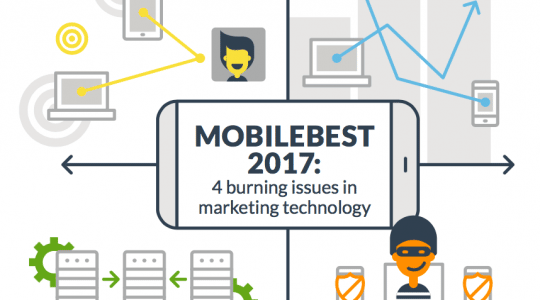
This is a guest blog post by Rion Haber from integrated marketing agency 1205 Marketing.
As digital marketers, the informational firehose from which we drink every day is unfathomably large.
New and infinitely faster devices seem to arrive on our doorsteps almost as quickly as the technology that drives them. From programmatic to performance, even the most informed among us works incredibly hard to keep pace with what’s next and we often find ourselves looking to the community in which we do business for other points of view, strategies, and even answers to everyday questions.
Community, needless to say, is important. It fuels our growth and connects us to other people who have the same goals and interests. This is about as true when it comes to the way in which users engage, not only our mobile apps, but our entire brand. The ability to form bonded relationships around a shared experience creates personal investment and encourages us to keep moving forward when we face a hurdle in understanding.
It’s not hard to see then, how the idea of connecting users to each other can be leveraged to build the type of brand evangelism that has defined some of the most well-known products of our time. That’s only the beginning though. Implemented correctly, mobile marketers who invest in community-building will see improvements, both inside and outside of their mobile apps, including improved stickiness, reduced churn, an overall reduction in paid acquisition, improvements in search engine rankings, better word of mouth, and more.
But how do you build rockstar-level communities around an application? Let’s start with what your users are looking for.
Define Your Mobile App Strategy
Whether you have a lifestyle app such as a cooking, health and fitness monitor, an organizational tool, mobile gaming platform, or even a business utility, the foundation is simple — find your rallying cry.
When building a community, it’s important to stop trying to speak to WHAT users are doing with your application and start figuring out WHY they’re doing it in the first place. For example:
- As a health and fitness app, we don’t want to just market a sit-up counter; we want to become a resource for people to live healthier lives.
- As a cooking app, we don’t want to just provide recipes; we want to help users become better cooks.
- As a dog-walking app, we don’t want to just walk dogs; we want to help people feel like better pet owners.
Often times, developers with more mundane utility-based mobile apps struggle with how to put a face on their communities. For example: It might be easy to view a financial utility like “Acorns” or “Robin Hood” simply as way to save money.
When you take a deeper look, however, you have a subscriber-base defined by people with a desire to gain a better understanding of their financial life. You’re not only helping them save money, you’re helping them to drive a better future for themselves.
[bctt tweet=”All mobile applications seek to solve a problem for their users. ” username=”tune”] It is at the very core of what they are. Whether that solution is finding the answer to life or simply killing a couple of minutes waiting for the bus, the key is to root out the story and connect people around it.
The mobile marketing graveyard is filled with incredible applications from developers who thought that great utility was the only benchmark for success. Don’t become one of them.
Focus On Content
Content marketing tends to be one of the most fundamentally uncomfortable topics for many strategists. It’s difficult to measure and about as non-formulaic as you can get. Oftentimes developers know they need it, but aren’t really sure where to get started. It also happens to be one of the most powerful tools available when it comes to offering up spaces for your community to get talking.
Build a Content Engine: One of the first things you can do to get a better handle on content is to build a structured content engine. A content engine is an area of your website where you talk about the issues that are important to your user base. These spaces will become the starting point for ongoing conversations within your community about the interests defined above.
Get users invested in your broader subject matter. Administering live-streaming video Q&A’s with subject-matter experts, hosting user submitted projects, and allowing feedback on your website, webinars, meet-ups, et al, are all great examples of this.
[bctt tweet=”A great content engine acts as a space where you can deliver value to your users and get them invested in your product. ” username=”tune”]Connect to Your Users
Activate Users Outside of Your Application: We can’t say this enough. And while it may fly in the face of traditional mobile marketing theory, the collateral effect of users’ ability to access your brand outside of your application offers a host of benefits. In addition to increasing general brand awareness, content delivered outside of your app can offer more in-depth walk-throughs of the best way to use your product, is an easy (and SEO-friendly) way to introduce new features, and provides a level of interaction not often available within an application itself.
Connect Users to Each Other Inside Your Application: Two people who may seemingly have nothing else in common are both trying to accomplish the same goal. We know this because they’ve both downloaded your application. Allowing them to connect within the app increases the likelihood that they’ll look to it, not just for its utility, but for the relationships they’ve formed there.
Gamification offers us some of the best examples of this. The ability not just to compete against yourself but to generate relationships within your app has proven itself time and again. Encouraging users to upload their recipes, post their best times for a mile run, or compete for who can save the most money in a specified amount of time, can all be great ways to rally your audience inside an application.
Provide a Space for Users to Share Their Success: Who doesn’t love a good “humblebrag”? Reached one of the goals we just talked about? Give your fans a place to talk about, share, and receive encouragement about it. Social media is a great ecosystem to do this in. Many applications offer “share to” features, but why not bake this functionality directly into your UX, as an added feature? Sharing my best time for a mile with my friends is great. Talking about it with other people who share my interest in running is even better. By allowing users to share their success, you can connect your application to a sense of accomplishment. This drives positive brand association.
Utilize Multi-Media: As we’ve seen on sites like Instagram and Snapchat, photo and video content is rising in popularity by the day. From 360 to live streaming, geo filters, augmented reality and more, user generated visual content is a great way to build stickiness within your application by creating emotional investment. This content becomes part of your application. It can be used to drive traffic to your onsite content engine as well as varying social channels. The human brain processes images about 6,000 times faster than words. So if there’s a story to tell about why users should adopt your app, always look to images to tell it.
Need some inspiration to help get started with building a thriving community around your application? Check out some of these great mobile-first brands building already utilizing many of these tips in spaces you might not expect:
- Yummly is one of the most successful cooking applications on the market. One of the ways they got there was by building a rock solid community directly into their app. Not only can I see other people’s recipes, I can post picture of my version. I can rate and review them, recommend to friends, share on social, upload my own recipes for others to try, and more.
- Venmo has set the bar for community building in an application that otherwise wouldn’t seem community friendly. I can send people funny messages when I pay them or they pay me. Scrolling through Venmo’s socially-skinned news feed is always good for a few laughs and often times reminds me about social events my friends or I participated in.
- Wag is the Uber of dog walking. As a dog lover, I can’t say enough about this application. It allows me to find local dog walkers who might be near me and hire them to grab my pup when I get stuck in a meeting. However, the creators of Wag didn’t stop there. I can review walkers and they can review my dog. I can send contact details for any given dog walker to a friend. The dog walker can send me pictures of my dog through the app, and more.
A Final Word
Above all, invest in your users and they’ll invest in you. Growth happens when potential subscribers adopt your products into their daily lives – when your products feel as much an extension of their daily grind as the device itself. Your community is waiting to engage. Don’t just build an application, build a following.
Author
Becky is the Senior Content Marketing Manager at TUNE. Before TUNE, she handled content strategy and marketing communications at several tech startups in the Bay Area. Becky received her bachelor's degree in English from Wake Forest University. After a decade in San Francisco and Seattle, she has returned home to Charleston, SC, where you can find her strolling through Hampton Park with her pup and enjoying the simple things in life.




Leave a Reply
You must be logged in to post a comment.